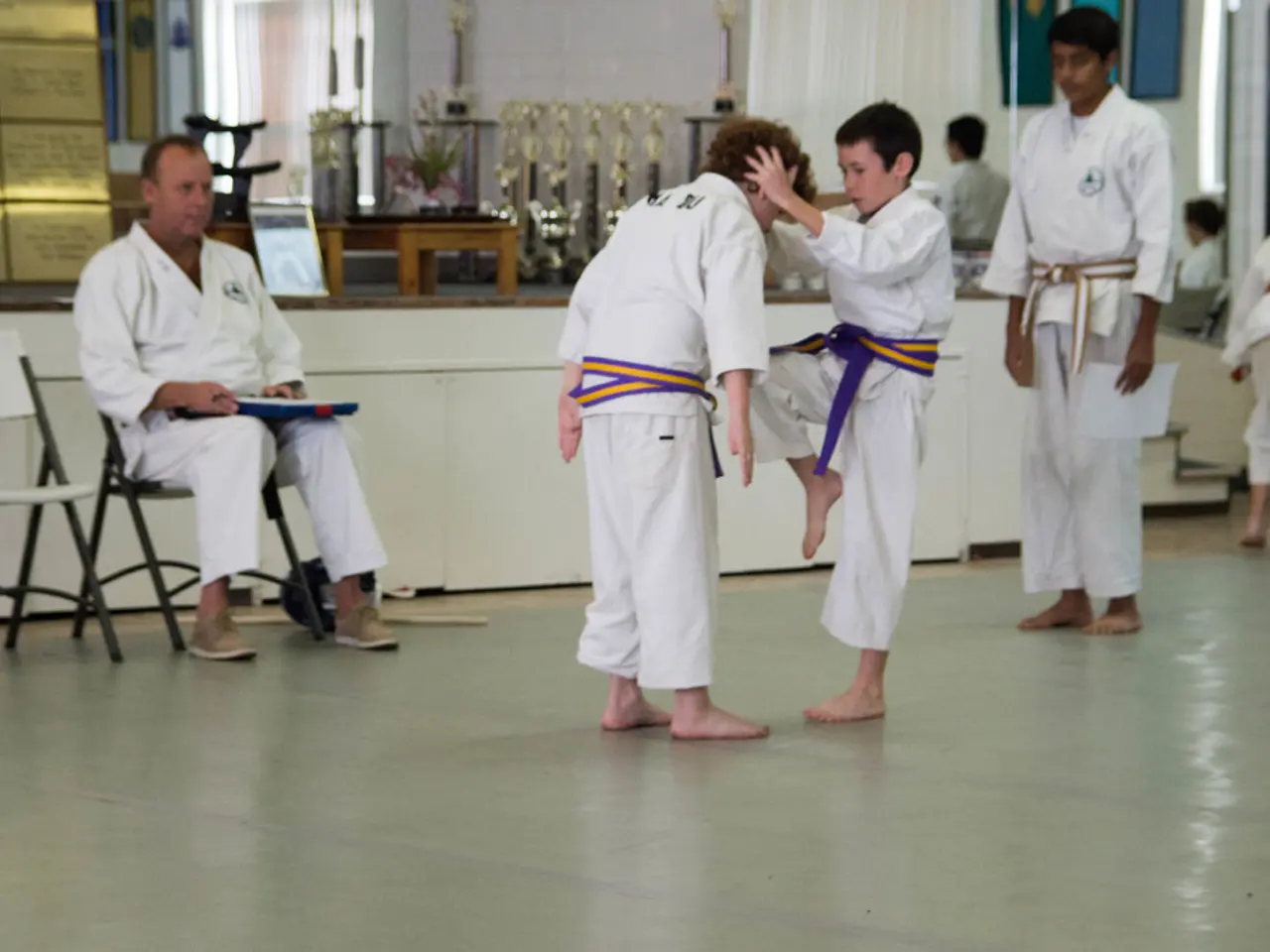Practical Techniques for Managing Attention Deficit Hyperactivity Disorder
In the daily hustle and bustle of life, managing Attention Deficit Hyperactivity Disorder (ADHD) can be a challenge. However, Cognitive Behavioural Therapy (CBT) offers a beacon of hope. This therapy, designed to help manage symptoms of ADHD, anxiety, depression, and other mood disorders, equips individuals with practical tools for long-term success in daily tasks and reaching new goals.
At the heart of CBT for ADHD lies the concept of mindfulness - being aware of what's happening in the present moment, involving noticing what's happening and detaching from judgment. This awareness is cultivated through mindfulness and meditation practices, which can improve attention control and emotional regulation.
One such practice is the "Stop. Think. Act." method, an impulse control technique that encourages pausing, evaluating potential outcomes, and making informed decisions. This method aims to reduce impulsive behaviours and the chance of making regrettable decisions or saying something inappropriate.
Another essential aspect of CBT is cognitive restructuring, which aims to challenge and replace negative thought patterns with more positive, realistic, and solution-focused thinking. The "Reframing Negative Thoughts Exercise" is a prime example, where individuals write down 10 tasks or accomplishments and find a better-feeling thought to counteract negative self-talk.
Moreover, CBT exercises emphasize the importance of structure and routine. Behavioural activation and habit formation techniques are employed to create structured routines and practice time management skills. This helps reduce overwhelm and improve task completion. Visual cues, such as a visual schedule or a checklist, can also help children with ADHD stay on track, build self-esteem, establish a routine, and feel a sense of accomplishment.
Keeping a time tracking log is another effective strategy. By monitoring tasks and time spent on them, individuals can bring awareness to any distractions and help recognize what requires addressing. Journaling is another tool that helps bring awareness to thought patterns, revealing a black-and-white visual to evaluate their accuracy. Asking oneself, "Which of these thought patterns and emotions may be distorting my thoughts through a negative filter?" is a key aspect of journaling.
Reward systems can be a powerful motivator for children with ADHD. Adding a sticker to the chart when a task is done, for instance, can boost motivation and reinforce positive habits. Self-monitoring and self-reward are crucial components of CBT, as they help individuals track behaviours and progress, and recognise their successes.
It's important to note that CBT exercises are not intended to replace professional services administered by licensed providers certified in CBT. These exercises are meant to be helpful in day-to-day life and in between therapy sessions.
Lastly, combining CBT with lifestyle changes such as regular exercise, structured routines, consistent sleep hygiene, and mindfulness meditation can further enhance symptom management. By incorporating these strategies into daily life, individuals with ADHD can navigate their day-to-day challenges with greater ease and achieve their goals.
In summary, CBT exercises for ADHD help individuals recognise unhelpful thoughts and behaviours, develop practical strategies for organisation and impulse control, and cultivate mindfulness for better attention and emotional regulation — all leading to improved daily functioning and symptom management.
- Regular exercise, as a part of lifestyle changes, can further develop fitness-and-exercise habits and contribute to the mental-health improvement of individuals with ADHD, complementing CBT strategies.
- The incorporation of science-based nutrition plans into daily routines can aid in health-and-wellness improvements, fostering better attention and focus for individuals with ADHD, in addition to CBT and other strategies.
- By adopting a combination of CBT tools, such as mindfulness practices, cognitive restructuring, and visual scheduling, along with maintaining a healthy routine encompassing sleep, exercise, and nutrition, individuals with ADHD can enhance their overall wellbeing and promote long-term success both mentally and physically.




